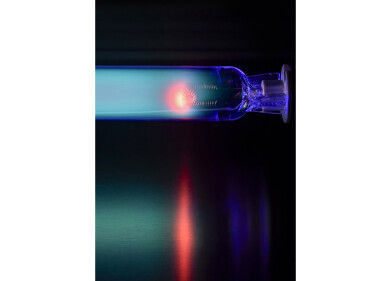Water/Wastewater
What is Microfiber Pollution?
Feb 28 2017
The causes of water pollution aren’t just industrial. There are some pollutants that we ourselves are flushing away down the plughole without realising. That was exactly the problem the UK government aimed to tackle with the microbead ban. The small plastic beads – formerly found in cosmetic and hygiene products – were banned in the UK last year to protect sealife.
And now, a new micro-pollutant has been discovered, which is similarly damaging to marine life. Keep reading to see what microfibers are and whether there is a way to stop them.
Introducing microfibers
You might think a fleece is a pretty innocent piece of clothing. And you would be right for the most part. But when synthetics like fleeces are washed, they release little plastic fibers into the water, which is then washed away as wastewater. Wastewater is filtered before entering lakes and oceans, but because microfibers are so tiny, they manage to make it through filtration systems.
On average, fleeces release 1.7g worth of microfibers each time they are washed. And it isn’t just new fleeces. In fact, older fleece jackets have been found to release almost double that of new fleeces. These microfibers are particularly problematic because – unlike natural fibers – they don’t biodegrade over time.
This was exactly the problem identified by Langbrett co-owners Alexander Nolte and Oliver Spies. Langbrett sells surfing and outdoor clothing, but it recently emerged that many of their products were contributing to microfiber pollution. But unlike most bigger retailers, the two friends weren’t content to let the problem persist.
Finding a solution
Nolte and Spies invented a laundry bag, called Guppy Friend, that holds clothes while they are in the washing machines. It can hold around two fleeces, and can be used alongside other non-synthetic laundry. As the clothes are washed, the bag catches the microfibers – stopping them from getting into the wastewater.
When the wash is complete, the clean clothes are removed from the bag leaving a visible layer of fibers on Guppy Friend’s white mesh. They can be taken off by hand and simply thrown into the bin. Planned to be sold for around $20-30, the bags are a cost-efficient alternative to expensive filtration systems which cost even more as they need to be fitted to washing machines.
Other threats to fish
As well as the likes of microbeads and microfibers, there are some gases that can affect the health of fish. Aquaculture is the farming of aquatic organisms in a controlled environment. It is the fastest growing animal food sector, but can become problematic if ammonia, excreted by the fish themselves, is not managed properly. ‘The Management of Ammonia Levels in an Aquaculture Environment’ looks at how ammonia levels can be monitored, reduced and even prevented.
Events
May 05 2024 Seville, Spain
May 13 2024 Munich, Germany
May 23 2024 Beijing, China
May 23 2024 Beijing, China
Jun 10 2024 Algiers, Algeria













